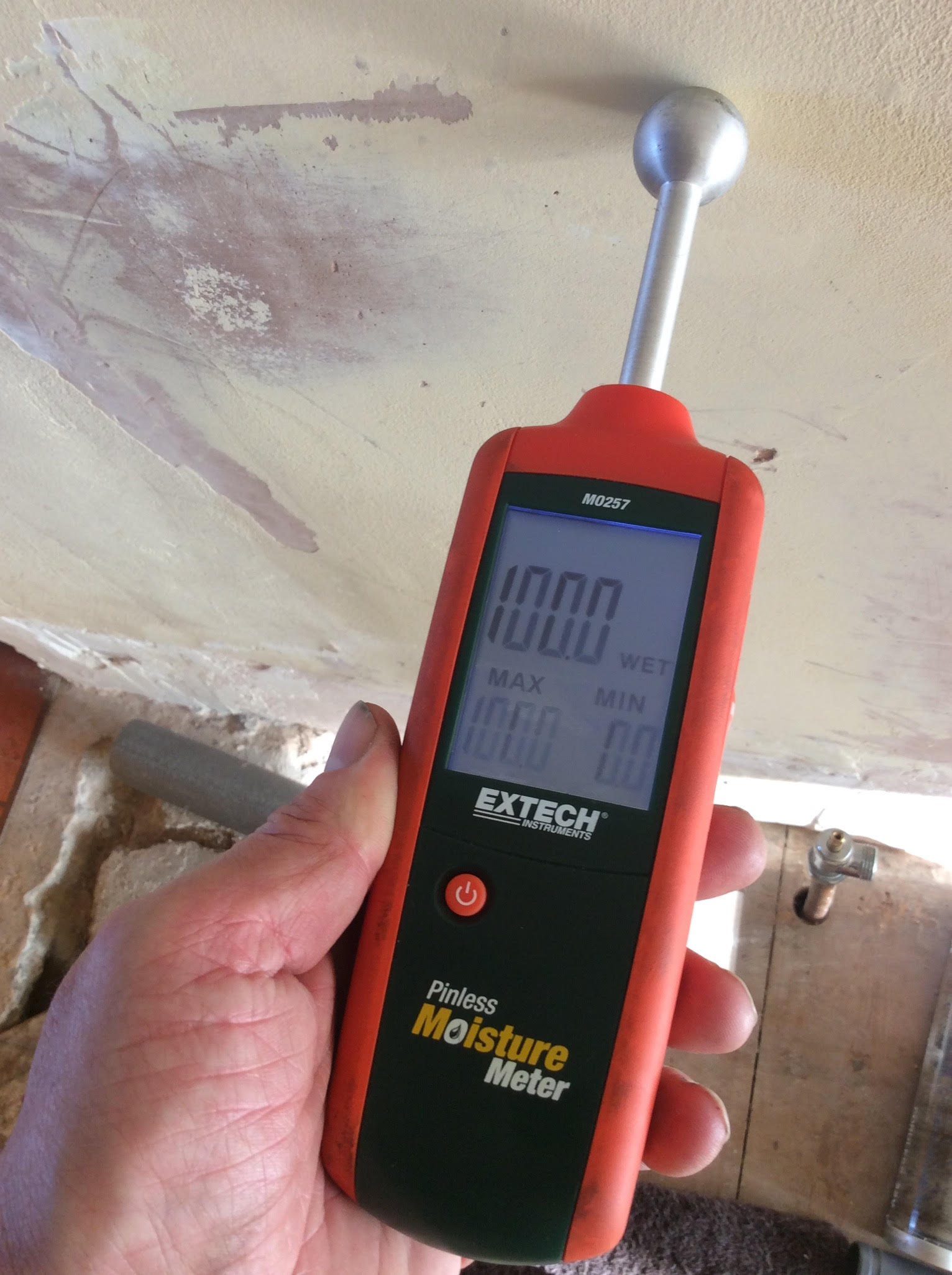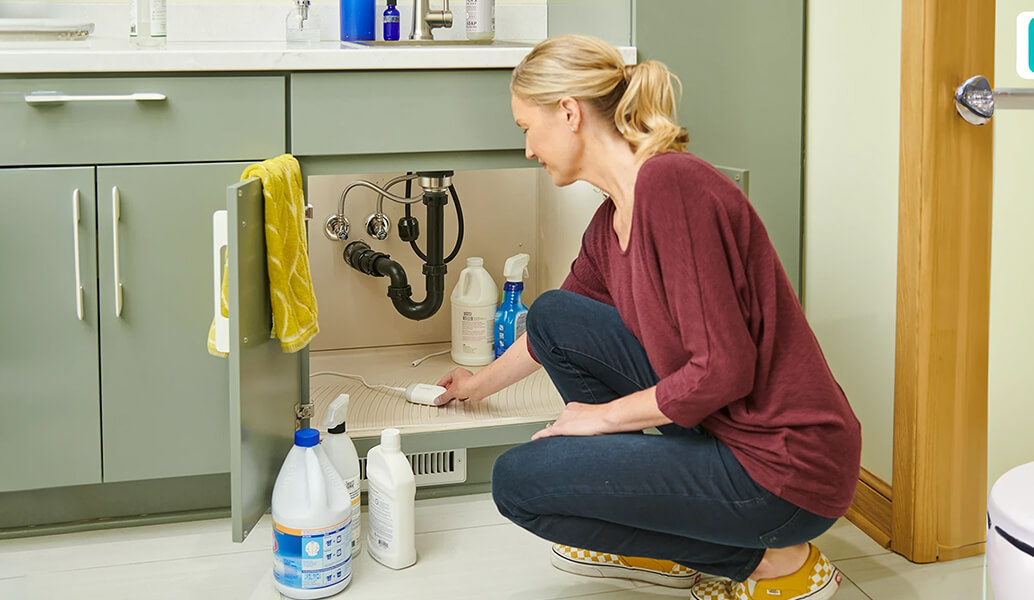The Relevance of Normal Water Leak Detection for Long-Term Home Defense
The Relevance of Normal Water Leak Detection for Long-Term Home Defense
Blog Article
Cutting-edge Solutions for Early Detection of Water Leakages in Buildings and Facilities
From innovative leak detection technologies to the deployment of IoT sensing units for real-time monitoring, the landscape of leakage avoidance is advancing rapidly. Automated water flow evaluation systems are reshaping exactly how leaks are identified and resolved, paving the means for an aggressive approach to water leak detection.
Advanced Leak Discovery Technologies
Advanced leak detection modern technologies, geared up with advanced sensing units and formulas, play a vital role in quickly identifying and identifying water leakages in numerous setups. These innovations utilize a mix of acoustic, thermal, and electro-magnetic sensing methods to find leakages properly. Acoustic sensors find the noise of getting away water, permitting for exact localization of the leakage source. Thermal imaging discovers temperature level changes created by water leak, supplying one more effective technique for leak identification. Electromagnetic sensors can recognize adjustments in electromagnetic areas triggered by water, supplying yet one more layer of leak discovery capability.

IoT Sensors for Real-Time Monitoring
In the realm of modern water leakage discovery, the integration of IoT sensing units for real-time surveillance stands for an essential advancement in improving positive leakage detection capabilities. These sensing units provide constant monitoring of water supply, supplying real-time information on water flow prices, stress variants, and temperature level adjustments. By leveraging IoT modern technology, these sensing units can identify also the tiniest anomalies in water use patterns, enabling early recognition of potential leaks prior to they intensify into significant concerns.
IoT sensing units send information to a central platform, where innovative algorithms assess the details and create alerts or notices when abnormalities are discovered. This real-time tracking ability allows homeowner or center supervisors to immediately address leaks, decreasing water damage, decreasing repair costs, and preserving water resources.
In addition, IoT sensors can be incorporated with building monitoring systems, permitting automatic responses to spotted leakages, such as shutting down water valves or turning on pumps to reduce the effect of leaks. On the whole, the implementation of IoT sensing units for real-time monitoring significantly improves the effectiveness and efficiency of water leak detection in buildings and facilities.
Artificial Intelligence Algorithms for Leakage Prediction

One trick benefit of using artificial intelligence for leakage prediction is its ability to constantly learn and boost its precision with time. As even more information is collected and fed right into the algorithm, it can fine-tune its predictions and adapt to altering problems, ultimately enhancing the reliability of leakage detection systems.
In addition, artificial intelligence algorithms can aid in recognizing subtle signs of leaks that might go undetected by typical tracking techniques. water leak detection. By analyzing intricate data collections in real-time, these algorithms can give you could try this out very early cautions and notifies, enabling timely intervention and precautionary upkeep to mitigate possible water damage and associated prices
Utilizing Thermal Imaging for Leak Discovery
Thermal imaging modern technology provides a promising method for finding water leaks in numerous systems and frameworks. By utilizing infrared radiation and temperature variations, thermal imaging cameras can recognize concealed leakages that are not conveniently noticeable to the naked eye. When water leaves from pipes or frameworks, it usually changes the temperature of the surrounding area, creating temperature differentials that thermal cams can catch. These temperature abnormalities are then converted into visible photos, highlighting the exact place of the leak.
One of the essential benefits of thermal imaging for leakage detection is its non-intrusive nature. Unlike standard techniques that might need breaking into wall surfaces or floors to locate leakages, thermal imaging allows for non-destructive testing. This not only saves time and minimizes expenses yet additionally lessens disturbance to the building or infrastructure being analyzed. Furthermore, thermal imaging can promptly check large areas, offering a comprehensive overview of potential leak resources in a timely way. In general, using thermal imaging modern technology boosts the efficiency and precision of water leakage detection, making it a useful device for preserving the integrity of structures and frameworks.
Automated Water Flow Analysis Solutions
How can automatic water circulation analysis systems change the discovery and administration of leaks in different systems and infrastructures? Automated water circulation analysis systems supply a proactive approach to leak discovery by constantly keeping an eye on water flow rates and patterns. By establishing standard data, look at these guys these systems can rapidly identify variances that might indicate a leakage, making it possible for prompt treatment to avoid considerable damages.
These systems make use of advanced formulas to examine real-time data and provide prompt informs when anomalies are spotted, enabling quick action to be taken. Furthermore, automated water flow evaluation systems can be integrated with structure monitoring systems or IoT platforms, boosting general performance and enabling remote monitoring capacities.
In addition, the data gathered by these systems can be used for predictive maintenance purposes, assisting to identify prospective weak points in the facilities before leaks occur. Overall, the application of automated water circulation evaluation systems can considerably boost leak detection and monitoring practices, ultimately bring about cost savings, reduced water wastefulness, and boosted sustainability in structures and framework.

Verdict
In final thought, the assimilation of innovative leakage detection technologies, IoT sensing units, equipment knowing formulas, thermal imaging, and automatic water circulation evaluation systems uses ingenious options for early detection of water leaks in structures and framework. These technologies make it possible for real-time surveillance, prediction of leakages, and efficient detection approaches to prevent water damages and wastage. Implementing these options can help go to website in maintaining the honesty and sustainability of water systems in different setups.
Report this page